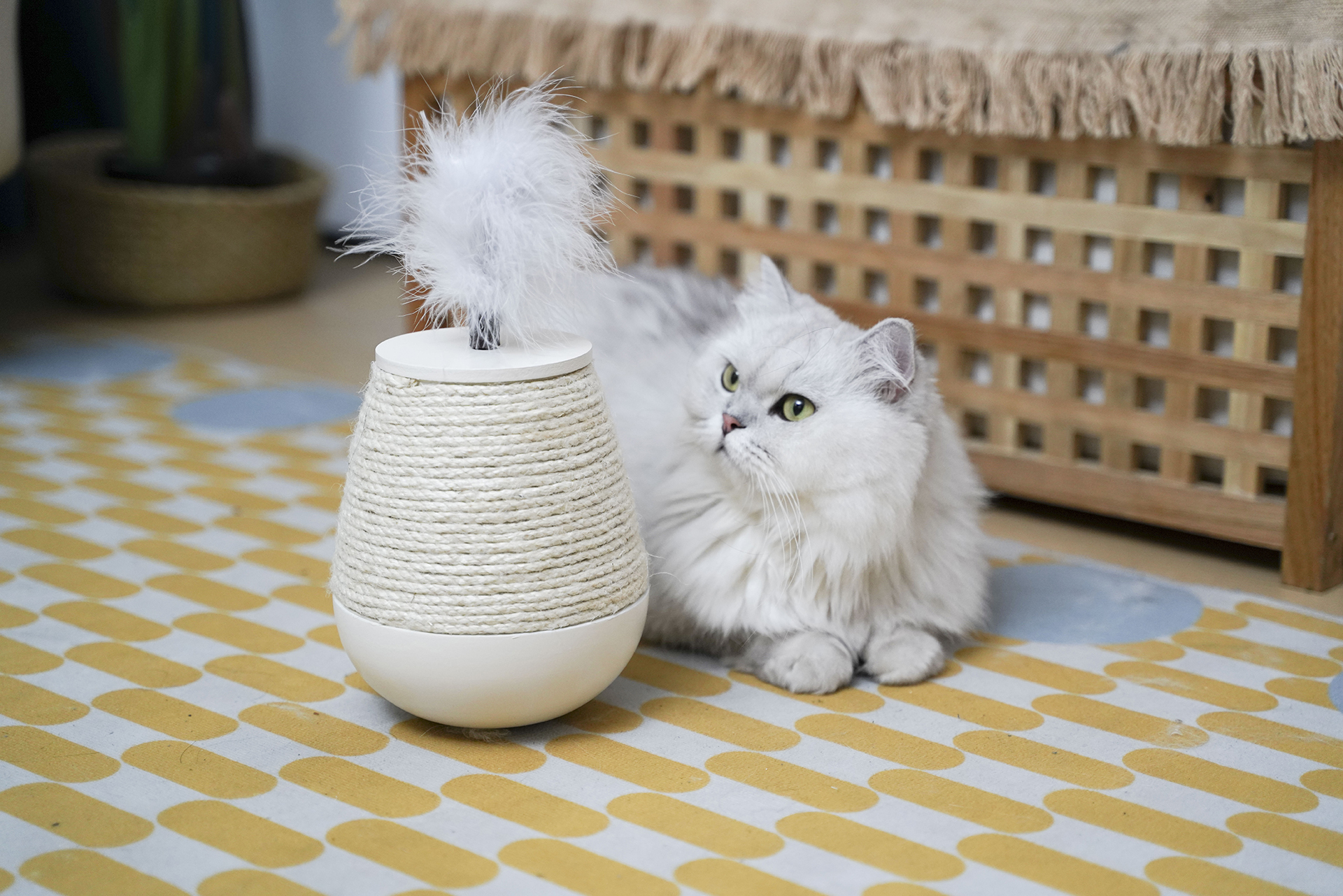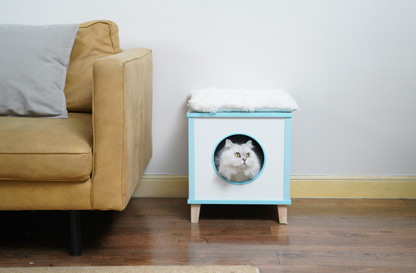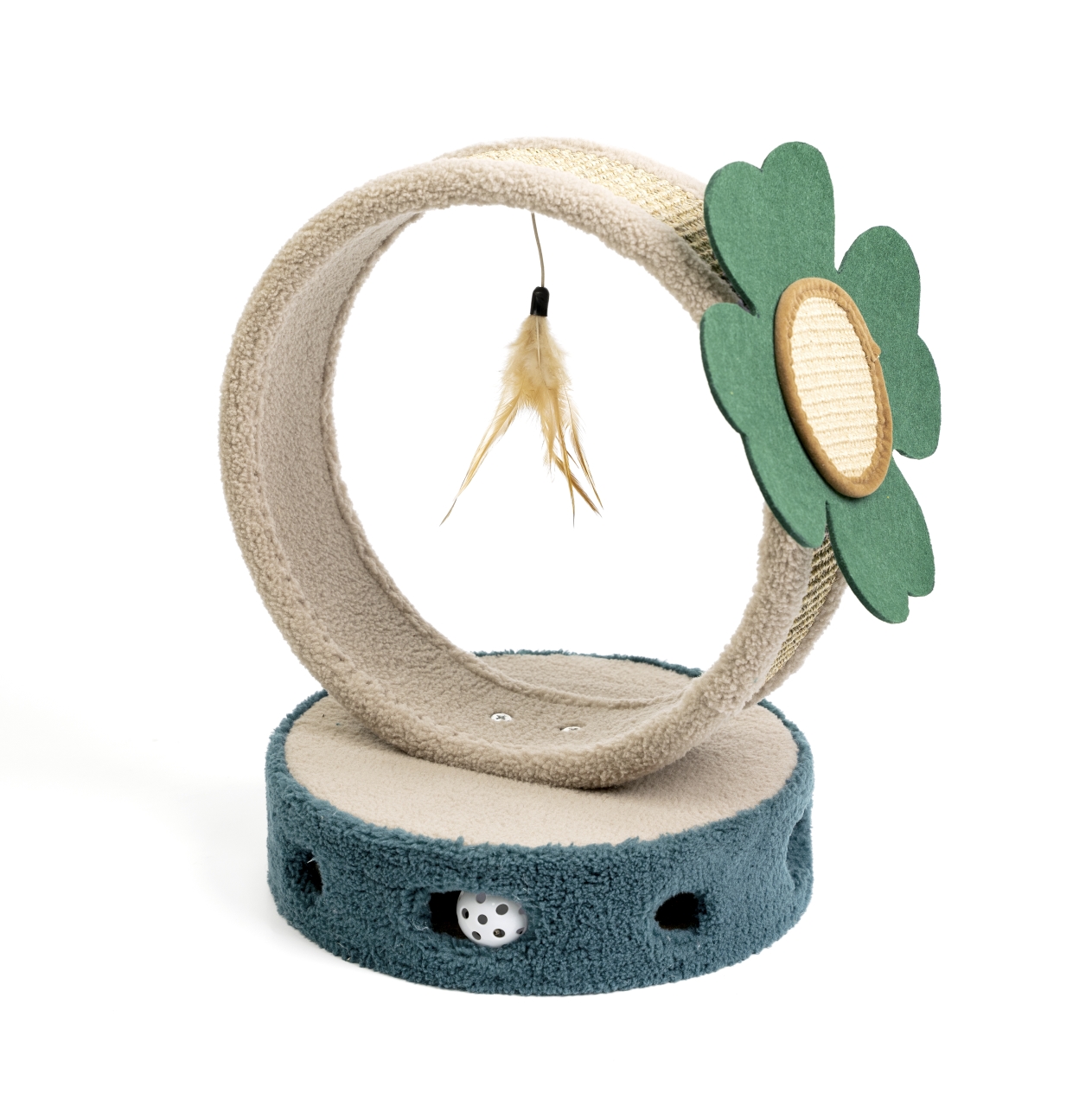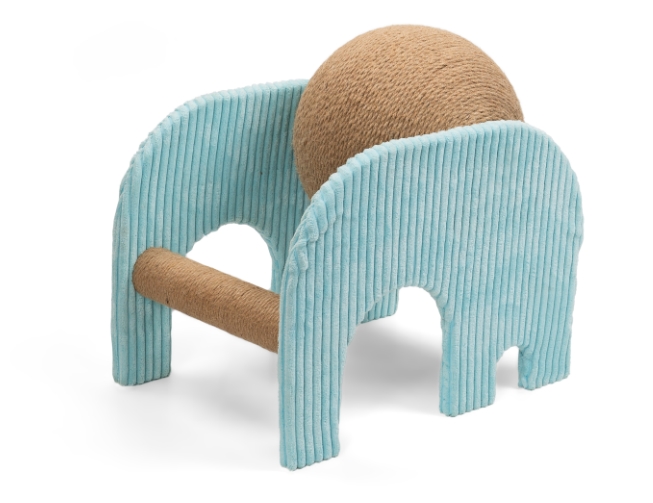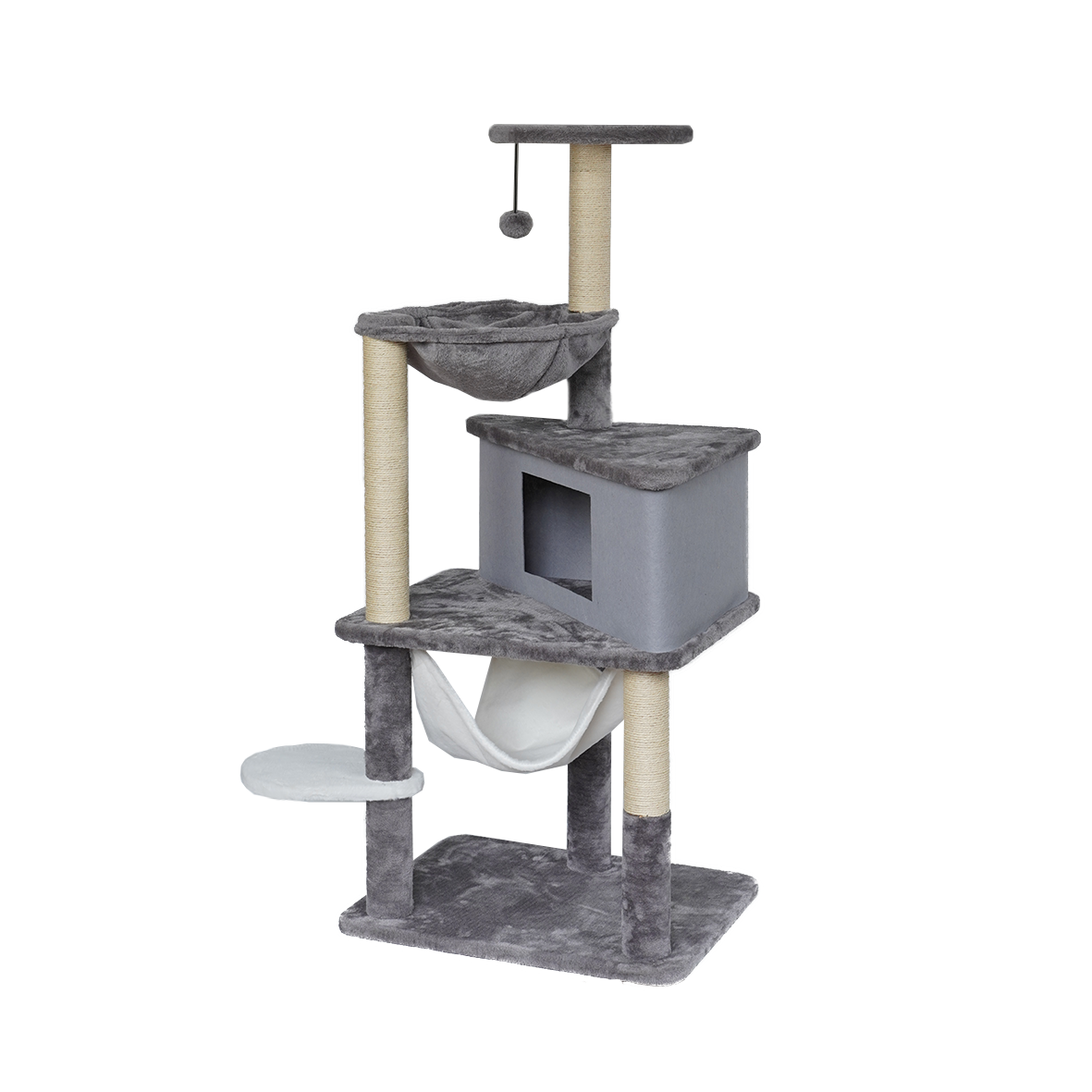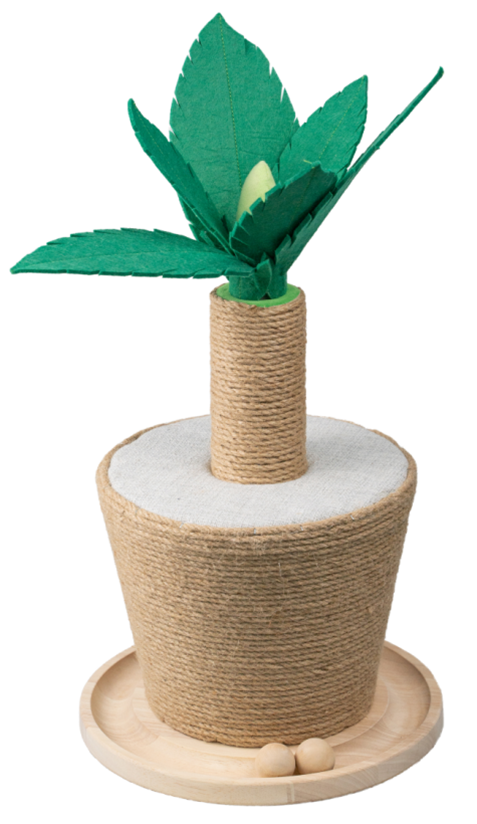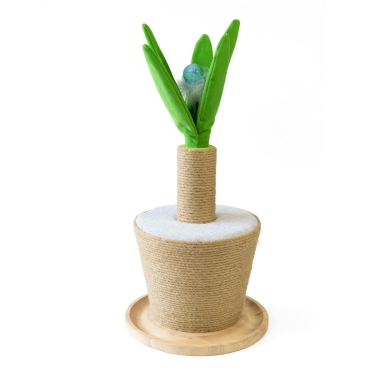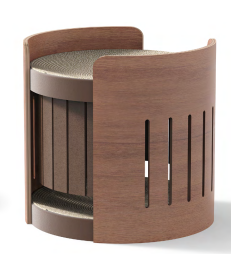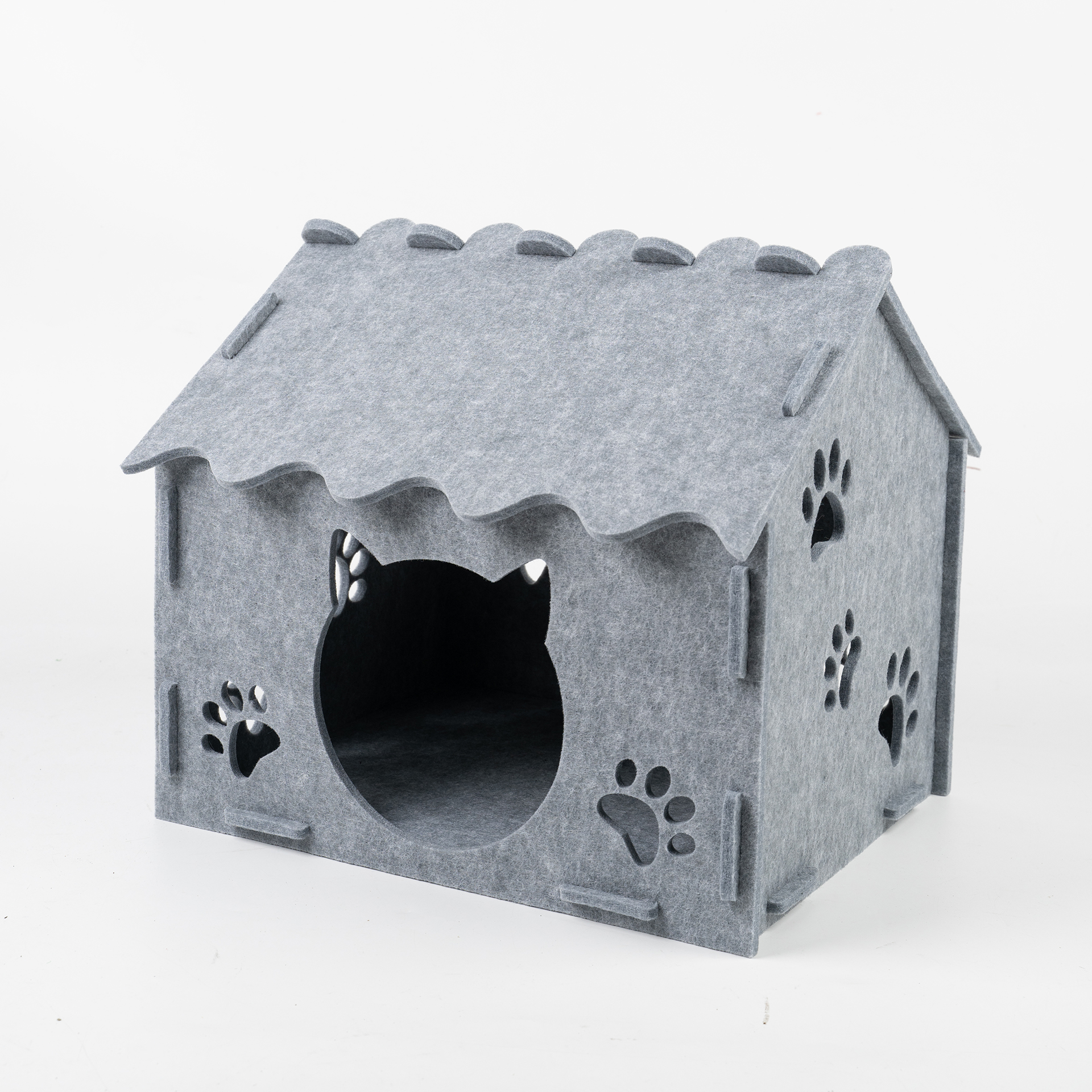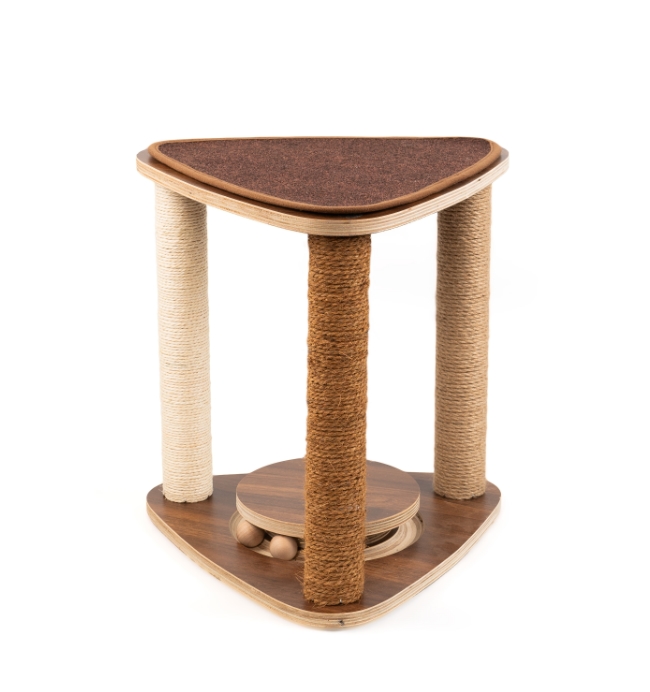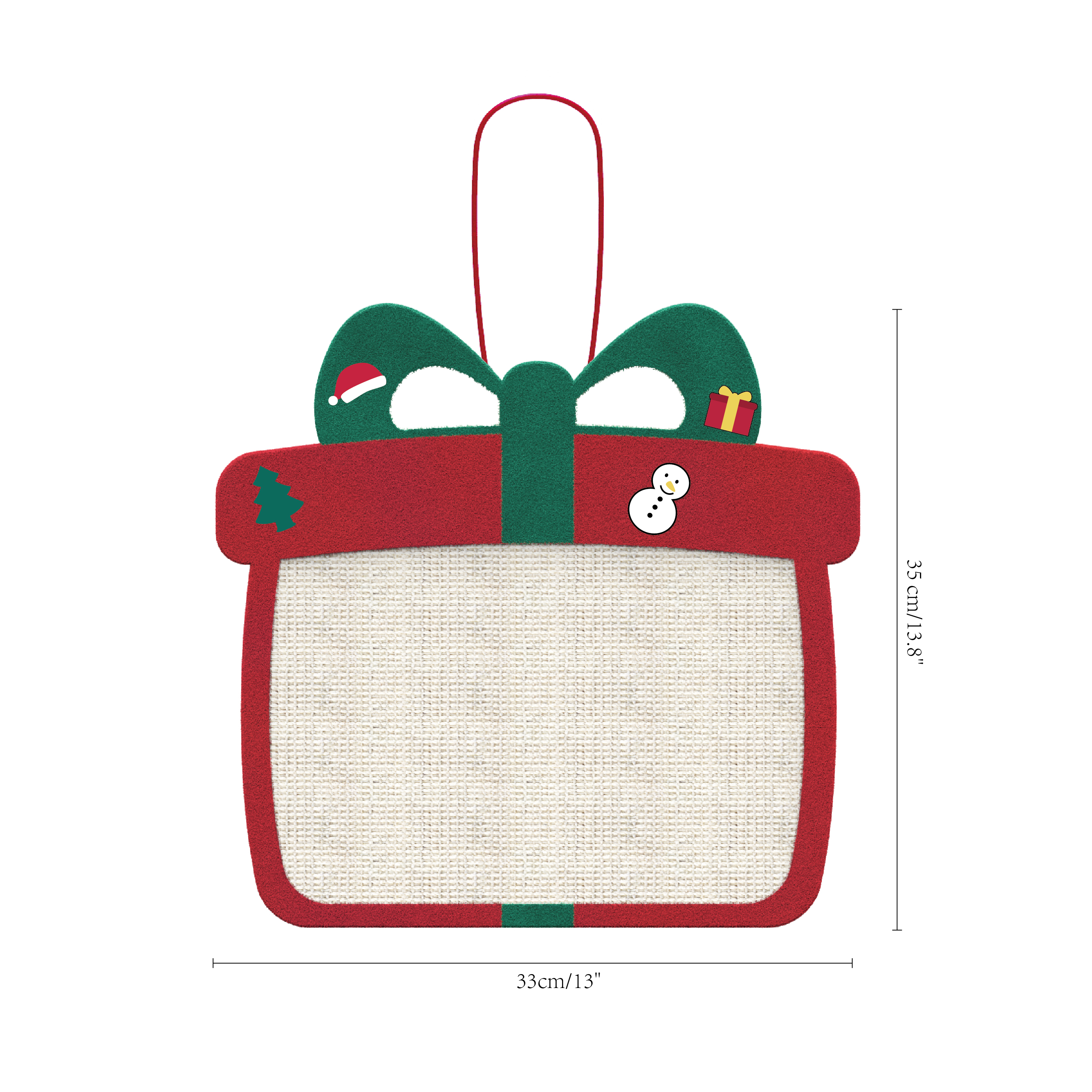Sentian Pet is based on natural materials, and its products are widely used in solid wood, sisal, seaweed, corn leaves and other environmentally friendly materials, which are deeply loved by customers and consumers.
The bionic design of cat furniture is a design method that satisfies the nature and behavioral needs of cats by imitating creatures and environments in nature.
Tree structure:
One of the common elements in bionic design is tree structures. Cats naturally like to climb, and simulating tree structures can provide cats with a vertical space for activities. The Cat Tree is a classic example, with its multi-level platforms, ladders and caves simulating trees in nature, satisfying cats’ natural instincts to climb and hide.
Prey-like shape:
In order to stimulate cats' hunting instinct, cat furniture is often designed to imitate prey shapes, such as birds, mice, etc. These shapes not only attract cats' attention, but also encourage them to engage in games such as chasing and slapping, which increase the cat's activity level.
Grass and herbal materials:
Considering that cats like to roll and roll on the grass in nature, some cat furniture is designed with materials that simulate grass. These materials provide a soft surface while satisfying your cat’s desire for contact with grass.
Camouflage elements:
The bionic design also includes some camouflage elements to help the cat furniture blend better into the home environment. For example, some cat furniture is designed to look like general furniture on the outside, but inside it provides space for cats to rest and play, so that it can be better integrated into the home layout.
Waterscape design:
Imitating water features in nature is also a form of bionic design. Some cat furniture may include water feature elements, such as artificial running water, small pools, etc., to attract the cat's attention while providing a unique environment for exploration.
Natural materials used:
In bionic design, the use of natural materials is a common practice. For example, choosing environmentally friendly materials such as natural wood, straw rope, and bamboo not only makes cat furniture more natural, but also helps reduce the impact on the environment.
Environmental interaction elements:
Bionic design can also include some environmental interaction elements, such as simulating sunlight effects, adding plant elements, etc., to provide a richer sensory experience and make cats feel closer to the natural environment.








 English
English 中文简体
中文简体 Deutsch
Deutsch